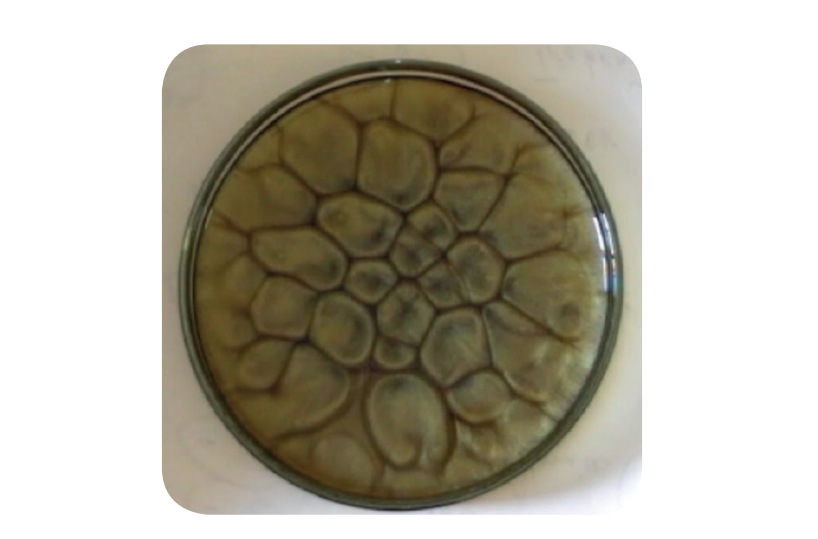



In addition to the production of paper Sun on a scale with other planets, we can also model its surface. In the upper layer of the Sun (convective zone) the transfer of energy is carried out by flow. This layer acts as water warming up in the pot. Warm water rises upwards, transfers heat to the surroundings and cooled goes down (Fig. 2).

Pic 79: Flow Heat Transfer
The surface of the Sun is completely filled with so-called Bénard cells. In the middle of these cells, a hot fluid is upwelled from the heated bottom layer, the cooled material on the sides of the cells then drops down. This phenomenon is also called granulation of the solar surface. We easily simulate the granulation of the solar surface in a flat container using oil with added aluminium powder (Fig. 3).

Pic 80: Granulation of the solar surface